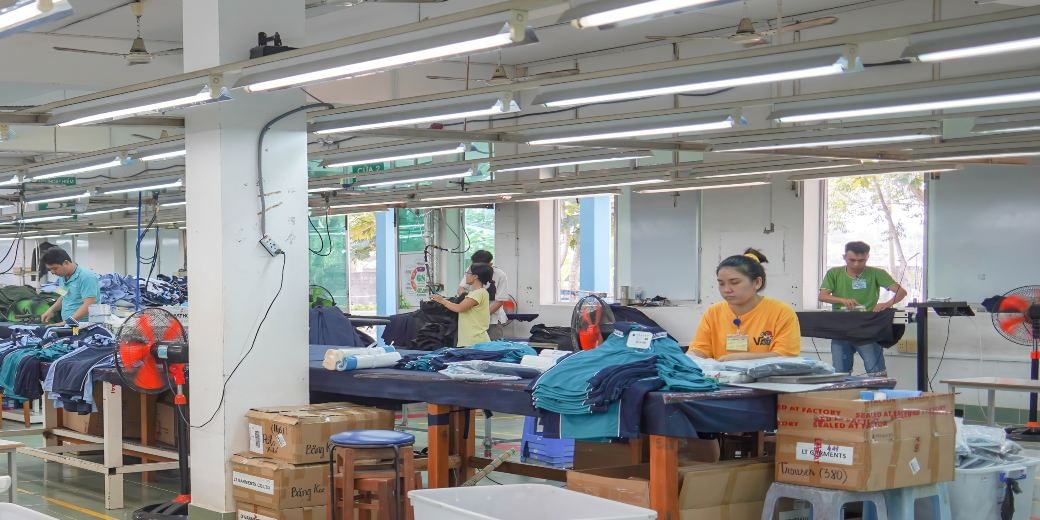MSMEs: Navigating opportunities and challenges for 2024
Not only have MSMEs fostered equitable economic growth, but also played a critical role in creating employment opportunities and made significant contributions to the nation’s social development
- Vikas Singh
- Last Updated : February 19, 2024, 16:11 IST

Over the past 50 years, the Micro, Small and Medium Enterprises (MSME) sector has become a catalyst for the transformation of India’s economy. Not only have MSMEs fostered equitable economic growth, but also played a critical role in creating employment opportunities and made significant contributions to the nation’s social development.
According to the annual report of the MSME Ministry for FY23, which cites data from the National Sample Survey (NSS) conducted in 2015-16, there are approximately 63 million MSMEs in India. These MSMEs contribute around 30% to India’s GDP and over 40% to its exports.
Additionally, the survey revealed that the Indian government aims to augment employment in the MSME sector by 5 crore by the year 2025, surpassing the current level of 11.10 crore.
A lookback at 2023
While digital transformation and e-commerce adoption have been key strategies for recovering from COVID-19 pandemic’s impact, obstacles such as limited access to financing, regulatory complexities, and a skills gap have persisted. Despite this, the Indian MSME sector demonstrated growth in 2023. A number of Government initiatives aimed at easing regulations and providing financial support have offered optimism for sectoral expansion in this scenario. As Indian MSMEs continue to display their resilience, the sector is set for growth and evolution in 2024.
Trends shaping the MSME story in 2024
The MSME narrative in 2024 will be shaped by various trends. One such trend is the increasing adoption of digital transformation by MSMEs. They will utilize technologies like artificial intelligence, blockchain, and the Internet of Things to improve efficiency and gain a competitive edge.
As e-commerce continues to grow, MSMEs that excel in e-commerce and effective online marketing will enjoy significant benefits. Also, to meet the demand for eco-friendly products and services, MSMEs will embrace more sustainable practices. This will not only lead to cost savings but also enhance customer satisfaction.
In addition, Governments and financial institutions will prioritize improving financial inclusion for MSMEs. They will simplify loan processes, provide financial literacy programs, and explore alternative financing methods.
In their pursuit of enhanced market access and cross-border trade, MSMEs are expected to venture into global markets. Digital technologies like cross-border e-commerce platforms will facilitate this expansion.
Challenges that lie ahead
While the road ahead for the Indian MSME sector is a promising one, several challenges need to be addressed:
Workforce crunch
One of the biggest challenges for MSMEs is the availability of skilled manpower. This is a particularly pressing issue for these enterprises, as they operate in specialized niches and struggle to find proficient workers for tasks such as machinery operation, financial management, and marketing.
Financial Woes
Securing necessary funds for starting, running, or expanding a business is a common obstacle faced by many MSMEs. This is often due to factors such as the lack of collateral or credit history, which makes it difficult to obtain loans. Moreover, high-interest rates, complex documentation requirements, and lengthy processing times further contribute to these challenges. Despite initiatives like the Pradhan Mantri Mudra Yojana introduced by the government, there is still a significant need for increased financial access, especially among smaller and newer MSMEs.
Slow technology adoption
The lack of technology adoption hinders small and medium-sized enterprises (MSMEs) from harnessing its benefits, especially in traditional sectors that rely on manual labor and outdated machinery. This absence restricts innovation, operational efficiency, and scalability. Government initiatives like the Technology Upgradation Fund Scheme aim to provide support for technological upgrades. Collaborations with academic institutions and technology providers can offer opportunities to access new technology and expertise.
Complexities of the regulatory landscape
Complying with various regulations related to labor, environment, taxation, and corporate governance poses a time-consuming and expensive challenge for MSMEs. The government’s Ease of Doing Business campaign aims to simplify regulatory frameworks by introducing online portals and single-window clearance systems. Professional service providers can assist in navigating the complexities around regulatory compliance, while adopting good governance practices and conducting regular audits helps mitigate legal and financial risks.
Difficulties in market access
Despite having a large domestic market, accessing it proves challenging for smaller and newer MSMEs. Breaking into existing supply chains and establishing a presence in the market requires strategic planning and resources. Government initiatives that promote market access and provide financial assistance can help MSMEs overcome these challenges. Additionally, building strong networks and partnerships with established players in the industry can open doors to new opportunities and customer bases.
The final word It is evident that the evolving MSME landscape in India presents an array of opportunities. The Indian government’s commitment to shaping the sector through various policies and programs, financial aid, tax incentives, and capacity-building initiatives are all aimed at stimulating sustainable growth and fostering innovation in 2024. In view of the above forecasted trends, MSMEs are poised for significant growth which will further boost the nation’s economic growth and prosperity.
The author is CEO and Co-Founder Sugmya Finance Pvt Ltd. Views are personal.
Download Money9 App for the latest updates on Personal Finance.
Related
- मैक्सिको के 50 फीसदी टैरिफ पर सरकार ने शुरू की बातचीत; जल्द समाधान की उम्मीद
- इंडो- US ट्रेड डील में पहले हट सकती है पेनाल्टी, रिपोर्ट में दावा
- रुपये ने फिर बनाया ऑल टाइम लो, जानें क्या है वजह
- बैंक कस्टमर के लिए बड़ी खबर, RBI हटाएगा ओवरलैप फीस,
- मैक्सिको ने अपनाई US जैसी पॉलिसी, 1400 से ज्यादा प्रोडक्ट लगाया भारी टैरिफ
- SpiceJet विंटर सीजन में जोड़ेगी 100 नई फ्लाइट्स! Indigo के कटे रूट्स का करेंगी भरपाई

